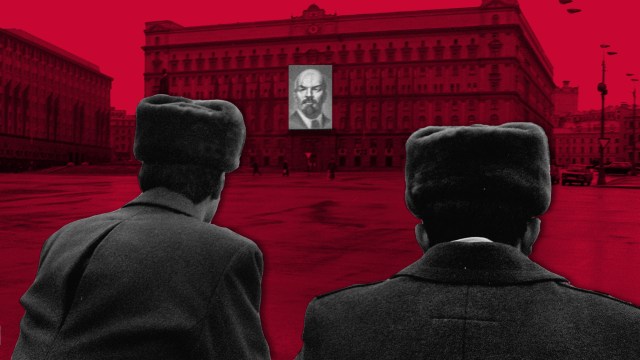Hippocrates, We Have a Problem: Doctors Are Burning Out at Surprisingly High Rates

Almost two-thirds of doctors in the U.S. say they’re burned out, depressed or both
Two years ago, then-Surgeon General Dr. Vivek Murthy sounded the alarm about two looming crises. One was the opioid epidemic, and the other was burnout in the medical profession. “As I think about the emotional well-being for our country, I am particularly interested in how to cultivate emotional well-being for healthcare providers,” he said. “If healthcare providers aren’t well, it’s hard for them to heal the people for whom they are caring.”
We know burnout is a huge problem in the United States. We know it’s a growing epidemic around the world. And we also know it has devastating effects on both our physical and mental health, and that three quarters of all healthcare spending in the U.S. is for the treatment of chronic, stress-related conditions that can be managed and prevented, like heart disease and diabetes.
So what do we do when the very people charged with safeguarding our health against the effects of burnout are themselves suffering from burnout? If we’re going to roll back the worldwide burnout epidemic, we’re going to have to start with healthcare providers. “The purpose of our calling has been broken,” write Dr. Sarah Bauer, a pediatrician in Chicago, and Dr. Angira Patel, an assistant professor of pediatrics at Northwestern University. “And, in order to repair this for this generation of physicians and ones to come, we need to revisit how to practice medicine and find joy as physicians.”
And the numbers back up just how broken the system is. Almost two-thirds of doctors in the U.S. said they’re burned out, depressed or both. And over half of those who said they were depressed cited their work as the reason. In another survey, doctors from 27 specialties were asked to rank their burnout on a scale of 1 to 7. All but one specialty graded their burnout at a 4 or above. And in comparing physicians to the general population, researchers from the American Medical Association and the Mayo Clinic found that doctors were significantly more likely to show signs of emotional exhaustion, depersonalization and overall burnout than the rest of us. This is reflected in the stunning fact that physicians have the highest suicide rate of any profession, three to five times higher than that of the general public.
This has dangerous implications for our national health system: we’re hemorrhaging doctors. Within ten years of joining the faculty of an academic medical organization, 40 percent of doctors will quit the field altogether. One survey of physicians across all specialities in the United States found that one in fifty doctors is planning to leave medicine in the next two years to pursue a different career and 20 percent are aiming to cut down on clinical hours in the next year. And in 2017, for the first time in at least ten years, applications to medical schools actually dropped. Combine this with the fact that in the next decade a quarter of U.S. doctors are going to retire – even as our population of aging Americans who are going to need more healthcare is going to skyrocket – and you can see the scope of the problem. The Association of American Medical Colleges projects that by the year 2030, our doctor shortfall will hit 100,000. And that’s a massive public health crisis. As Bryan Bohman, professor of anesthesiology at Stanford University, put it, “when a physician drops off the precipice because they’re overstressed, the amount of damage it does to the medical care system is tremendous.”
Then there’s the damage that burnout causes within the system. According to a Johns Hopkins study, medical errors are responsible for an estimated 250,000 deaths each year in the U.S. And as Dr. David Meyers, chief medical officer of the Agency for Healthcare Research and Quality, recently noted, “when doctors and nurses feel burnt out, they are more likely to make a medical error.” The studies bear him out, with one finding higher death rates in intensive care units staffed by doctors and nurses who reported higher levels of burnout. Another found a connection between physician burnout and a range of “poor patient safety outcomes.” And a study released just last week by the Institute of Medicine found that if a doctor is showing signs of burnout, medical errors areover twice as likely. Not surprisingly, medical errors also cause stress and depression, which in turn drive more errors, and a downward cycle ensues.
There are some factors of burnout that doctors share with the rest of us — especially all the ways in which technology has accelerated the pace of our lives, both at work and at home — but there are also some factors that are unique to the medical world.
First among them is the fact that the people doctors are dealing with every day are themselves at their most stressed. Another factor is that the stakes are high — literally life and death — and any mistakes doctors make can be costly and irrevocable. “You have to learn to put those griefs in saran wrap and unwrap them at the end of your shift,” says John Garvin, anemergency room physician in Virginia. “Whereupon, I hope you will deal with them.”
And that’s in the best case – that’s the life of service that doctors are choosing when they go into the profession. In recent years, on top of the built-in stresses of actually trying to heal sick patients are the additional stresses of dealing with the growing bureaucratic demands that surround that process. Right now, nearly half a doctor’s day is spent on administrative and medical records work. For each hour spent face-to-face with a patient, a doctor will spend two hours ata computer doing desk work. You start out practicing medicine and you quickly find yourself managing a medical system. And very few doctors spend seven to ten years in med school and residency in order to do the latter.
Then there’s the culture of the medical world. Burnout culture afflicts the entire world and every profession. It’s built on the macho notion that overwork and sleep deprivation are signs of strength and dedication, and that prioritizing your well-being and unplugging and recharging are signs of weakness. But this is even more pronounced in a profession in which taking care of others is the entire point. In this culture, raising your hand because you’re drowning isn’t just a sign of weakness, it’s the medical equivalent of a cardinal sin: putting yourself ahead of your patients.
Dr. Dike Drummond is a family practice physician and author of Stop Physician Burnout: What To Do When Working Harder Isn’t Working. He writes that physicians internalize two prime directives. One is to never show weakness, and the other is that the patient always comes first. “This is a natural, healthy, and necessary truth when we are with patients,” he writes of the latter. “However, we are never shown the off switch. If you do not build the habit of putting yourself first when you are not with patients, burnout is inevitable.”
And, of course, what the science now clearly tells us is that taking care of yourself is the most essential thing you can do in order to properly care – and maybe make life and death decisions – for someone else. What that means is that putting the patient first also means putting yourself first. We’ll call this the Hippocratic Paradox to go along with the Hippocratic Oath of “first do no harm”.
As powerful as the taboo is about seeking help in the civilian world, it’s even more powerful in the medical world. “Concern about the stigma related to seeking mental health services is overwhelming,” says Dr. Carol Brownstein, formerpresident of the American Psychiatric Association and professor of psychiatry and neurology at NYU Langone Health, “in part due to anxiety about licensure, credentialing and hospital privileging.” And burnout prevention services are offered to less than half of hospital-based physicians and at only 31 percent of office-based practices.
So it’s not enough to put the burden on doctors to make changes in their individuals lives – as valuable as that can be. As Drs. Bauer and Patel write, even when well-being services like yoga and meditation rooms are available, they’re not going to address the large-scale structural issues. “The real problems on a systems level, such as decreasing clerical burden, allowing for a work-home balance, and changing the cultural expectations of the ideal physician, are harder to acknowledge and address,” they write. Or, as Dr. Tait Shanafelt, Chief Wellness Officer at Stanford Medicine, put it, “the message to physicians…is that you are the problem, and you need to toughen up. We need to stop blaming individuals and treat physician burnout as a system issue. If it affects half our physicians, it is indirectly affecting half our patients.”
Part of that will involve changing how doctors become doctors. It’s in medical school and residency that many of these destructive notions about overwork and sacrifice are internalized. “We are not taught life balance skills in our medical education,” writes Dr. Drummond. “In fact, our residency training teaches us just the opposite. We learn and practice ignoring our physical, emotional, and spiritual needs to unhealthy levels and then carry these negative habits into our career.” But changing this medical education culture is challenging. In 2003, the Accreditation Council for Graduate Medical Education (ACGME), which supervises medical-education programs, issued new rules limiting the average work week for residents to 80 hours. Even that seems extreme – in Europe the cap is 48 hours per week – but the change has triggered a continuing debate, with some claiming the reduced hours limit residents’ experience and training. And it’s still unclear how much has actually changed for residents since these rules were instituted.
What is clear is that once physicians enter practice, much more has to be done to help them do effectively what they’ve dedicated their lives — and often ten years of training — to do. In other words, more patients, less paper. “Let physicians focus on doing the work that only they can do,” says Dr. Shanafelt. “While physicians work at the top of their licensure, mini tasks should be delegated to support staff.”
We also need to make a more focused and meaningful distinction between where metrics are useful and where they’re not useful. Our entire world is increasingly driven by metrics, but as the saying goes, not everything that can be measured matters and not everything that matters can be measured. As Drs. Bauer and Patel argue, while metrics are of course useful in the business of medicine, they can also be misused in the name of efficiency and productivity to drive burnout. What metrics don’t measure, they write, “is the dearth of time and space to think and to talk about patients, the connection with colleagues that is required to optimize care, and the inspiration required to innovate and to consider better ways to care for our patients.”
The good news is that there are creative responses popping up all over the country. In Minnesota, the Hennepin County Medical Center has created a “reset room” – a space filled withplants, soothing lights, a sound machine and cushy chairs where doctors can go to recover from a stressful event or simply recharge as part of their day.
One of the most innovative programs is the “time bank” at the Stanford University School of Medicine. The initiative allows doctors to “bank” time spent on things like meetings, teaching, mentoring, writing grants or covering for someone else’s shifts. They’re then able to redeem the credits for benefits that make their lives easier, like meal deliveries and cleaning services. One doctor planned to devote his time credits to helping his wife after the birth of their child, and also donated some to a co-worker who’d be covering for him.
The program started out as a pilot after a task force was charged with finding out why so many promising young doctors were dropping out. The investigation found that, even though the school had a range of work-life programs available – from paid parental leave to flex-work – they weren’t being used. “The physicians and scientists feared that if they used the policies, they’d be viewed as not being serious about their careers and would suffer as a consequence,” said Hannah Valantine, a cardiologist who led the pilot.
The time bank is being used to great effect. The proportion of doctors and researchers who said they’re satisfied with Stanford shot up by almost 60 percent. Grants submitted – aided by time bank credits – went up and were approved at a rate higher than that of the university-wide rate. The share of those willing to cover others’ shifts almost doubled, and participants reported feeling more collegial and having more time to talk about research with colleagues.
A few years ago, during a visit to the Cleveland Clinic, I saw firsthand how they were addressing the physician burnout crisis with a program called “Code Lavender.” Hospitals, of course, have “code red” and “code blue” for emergencies, but traditionally no way to address the crisis of physician burnout — including, frequently, the stress and emotions that come from experiencing the death of a patient, for example, or caring for sick children.
I spent the afternoon touring the hospital with the Cleveland Clinic’s then-CEO Toby Cosgrove, and among the many medical and technological marvels the hospital was using to save and improve lives, Code Lavender stood out as particularly innovative. Through Code Lavender, the Cleveland Clinic had assembled a “rapid response” team of holistic nurses to serve as a kind of SWAT team for burned out doctors and nurses, providing massages, Reiki, healthy snacks and water, and emotional support. They also dispensed lavender arm bands, as a visual reminder to doctors to not push themselves too hard. As Amy Greene, the Clinic’s director of spiritual care, said, “Cleveland Clinic caregivers are used to seeing really difficult cases, but even they are going to buckle when they get hit two or three times in one day. Code Lavender is a holistic team approach to going up and saying, ‘Hey, we’ve got your back.’” Tellingly, the program originated as a support system for patients and their family members, but ended up being used mostly for hospital staff.
Changing our medical culture is a huge challenge but it’s also a huge opportunity. As Drs. Bauer and Patel put it: “The debate about burnout may be the beginning of a renaissance in medicine, where physicians reconsider how the art that feeds the joy of their calling is practiced, where they consider innovative models of care that allow them to be financially solvent but also establish meaningful healing relationships with patients, families and colleagues.”
And that’s going to benefit all of us – and not just because we’ll get better medical care. It can be the driving force that changes the culture of burnout worldwide. Medicine is all about the latest science and technology, but it’s also a deeply human practice fueled by connection, communication and empathy. This challenge – of maximizing what technology can do for us, while also creating room for our humanity – is common to us all. But it’s put into stark relief in the medical world. The sooner we can create ways for doctors to take care of patients without burning out, the better both for doctors and patients.
—
Reprinted with permission of Thrive Global. Read the original article.





